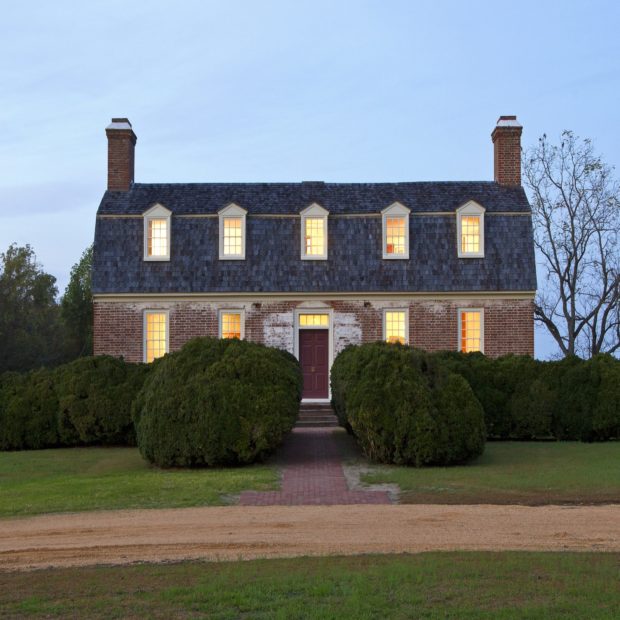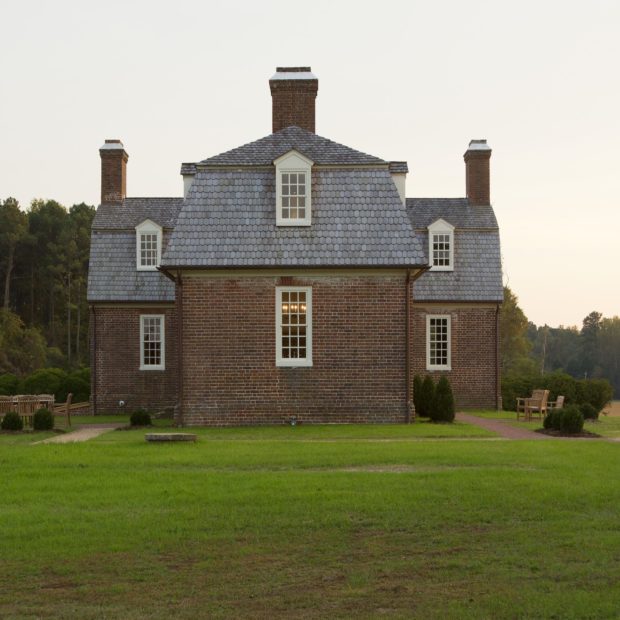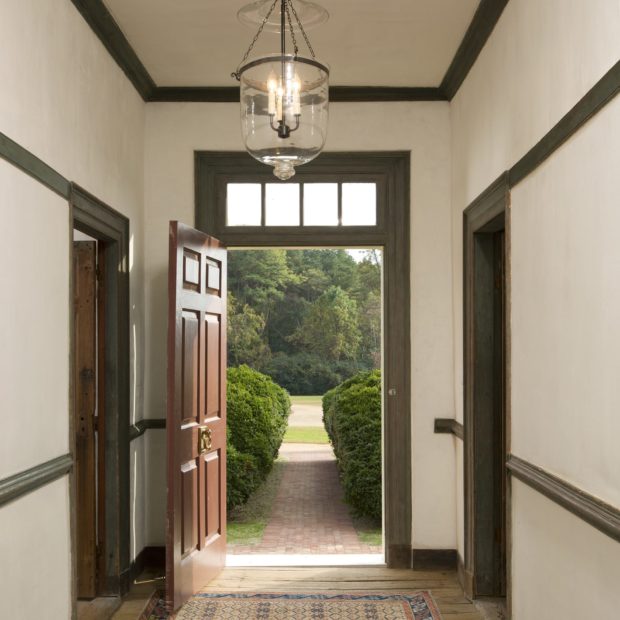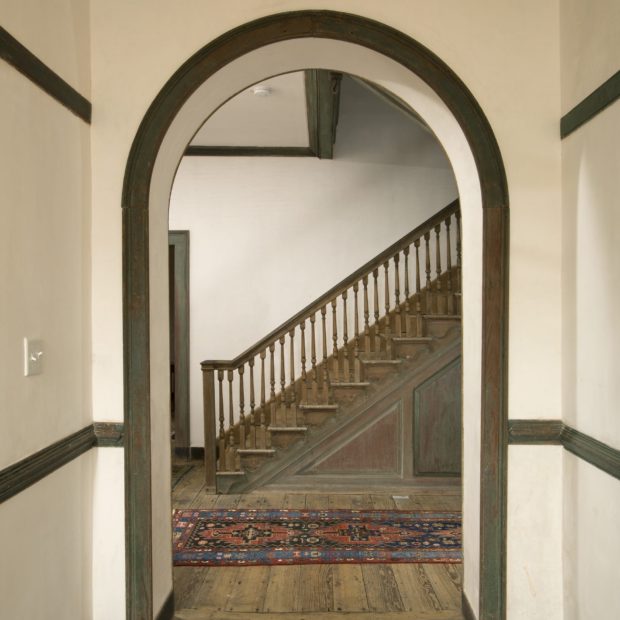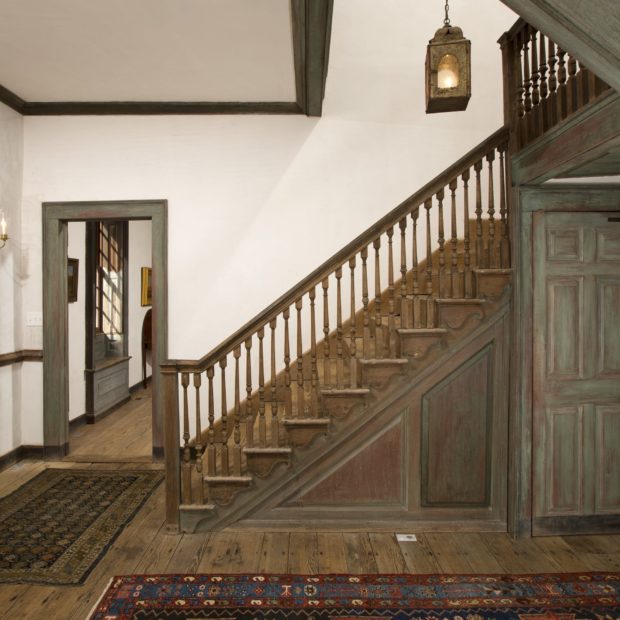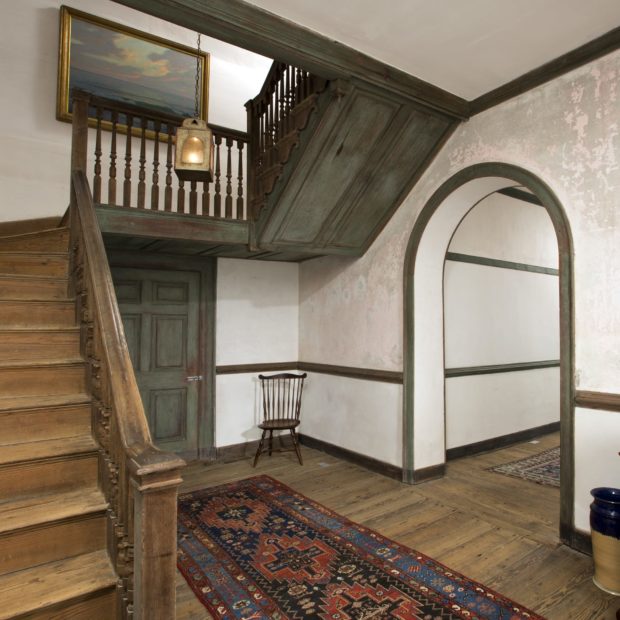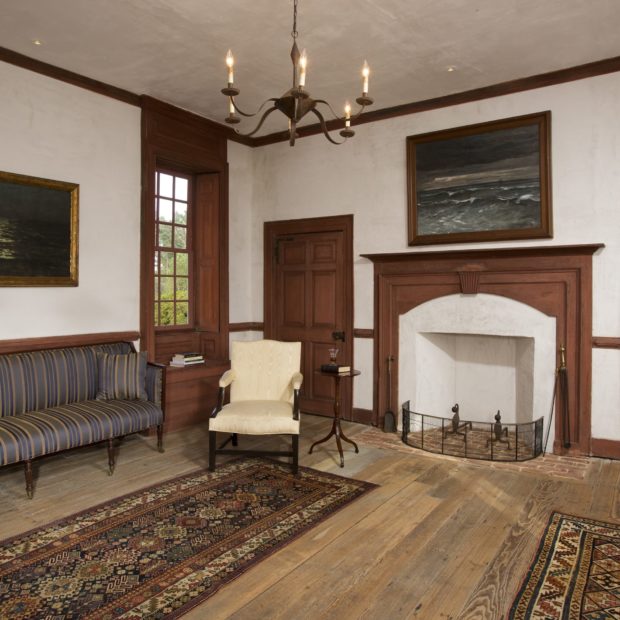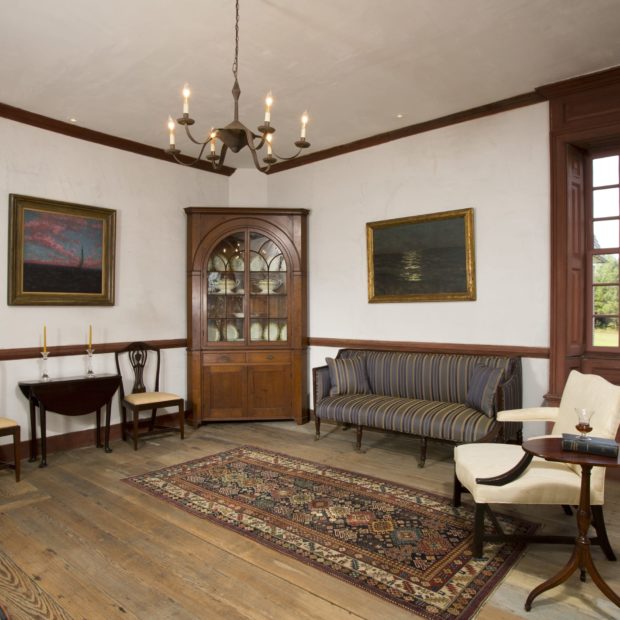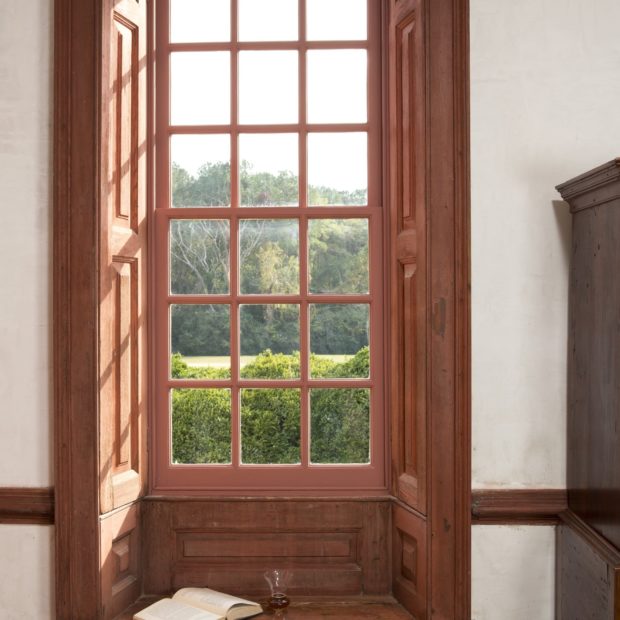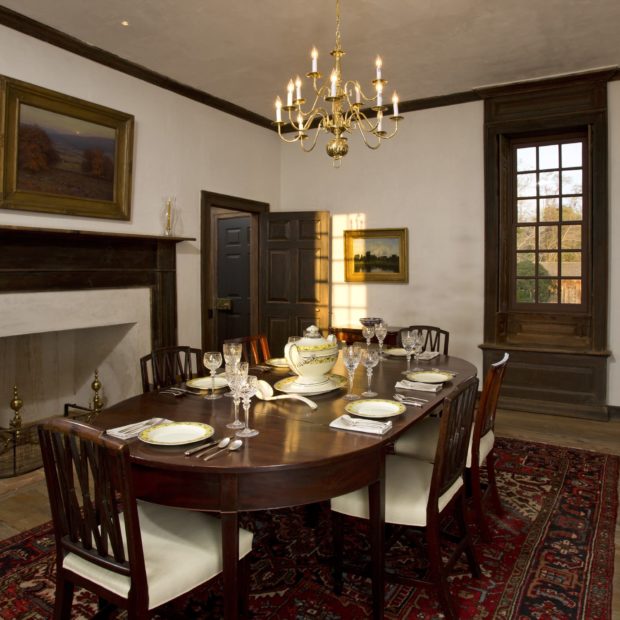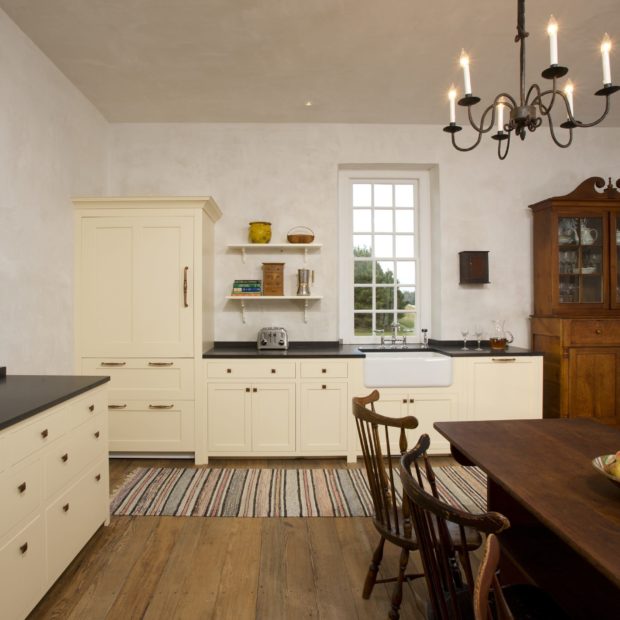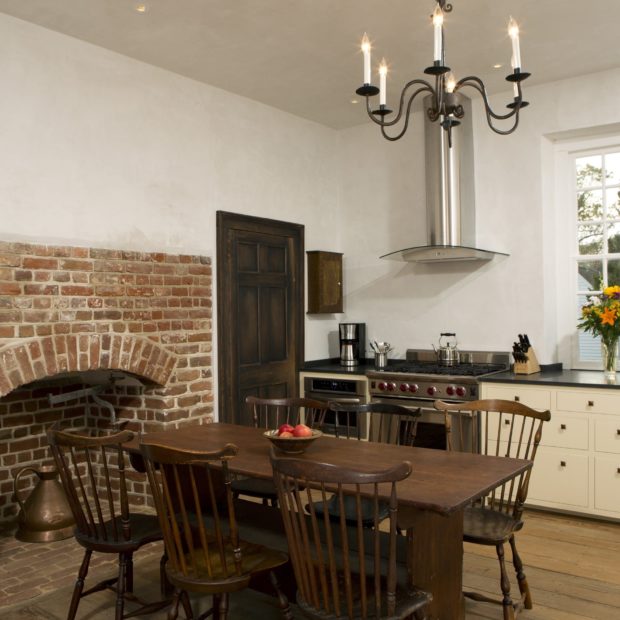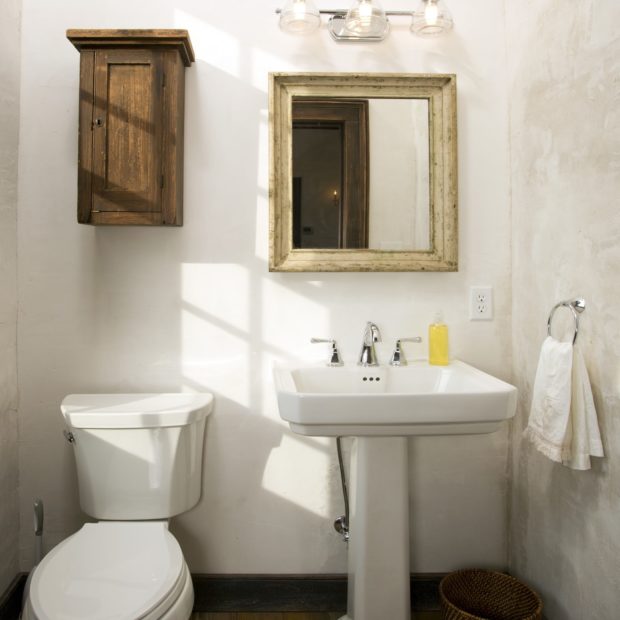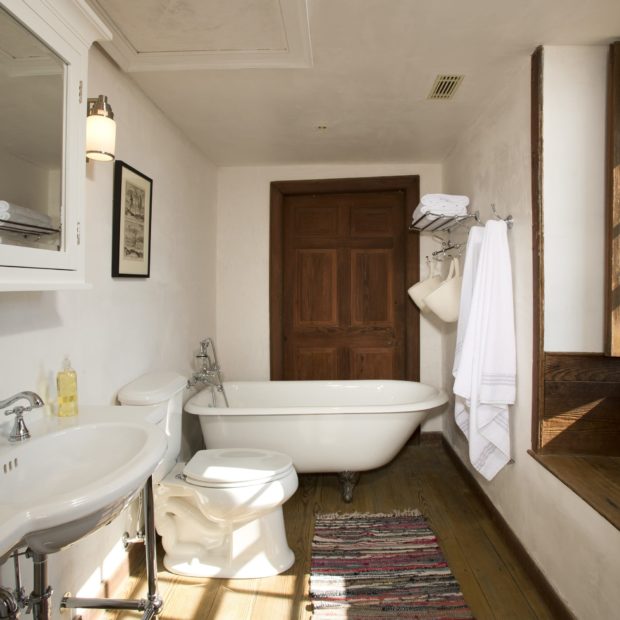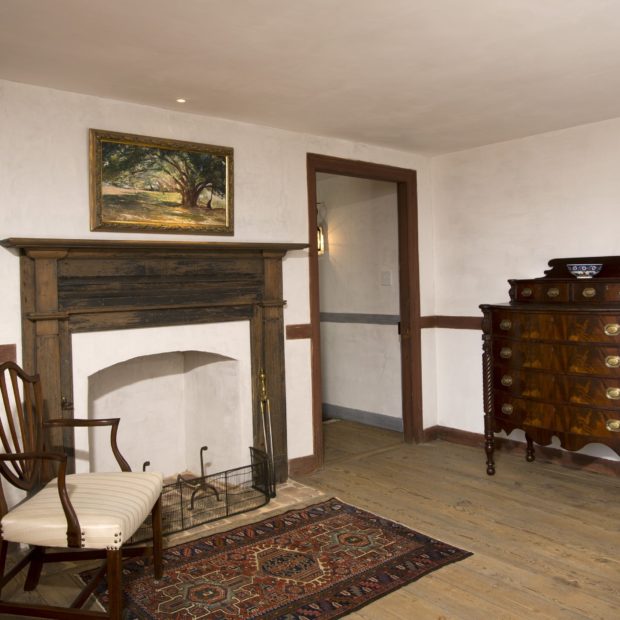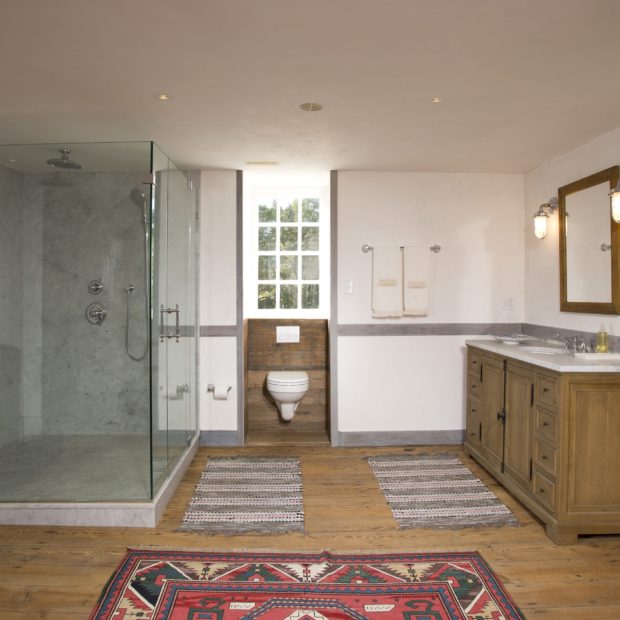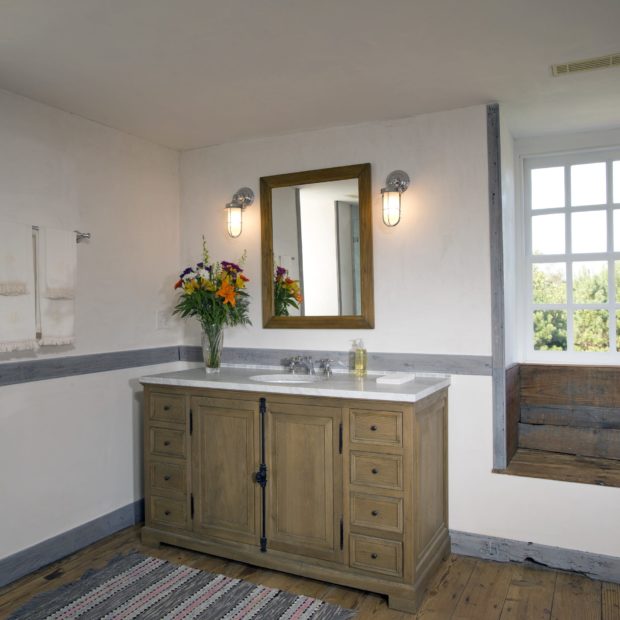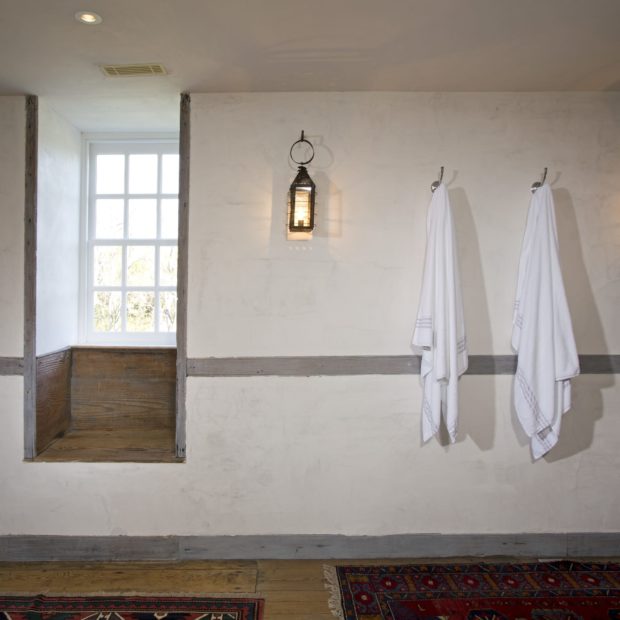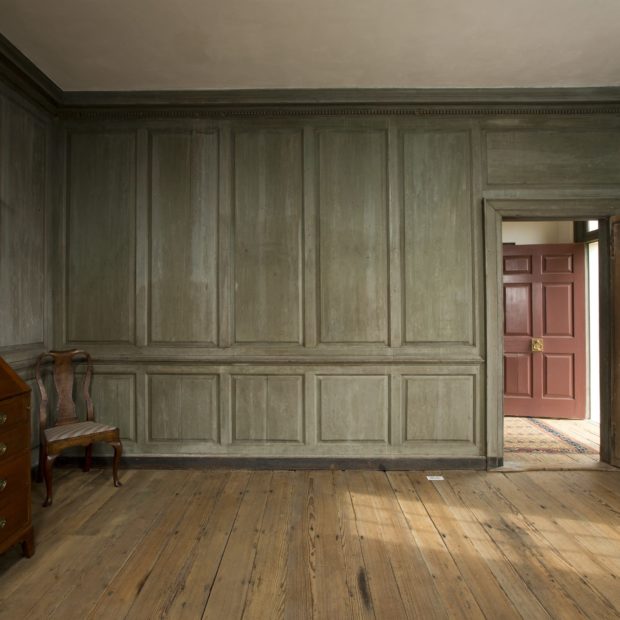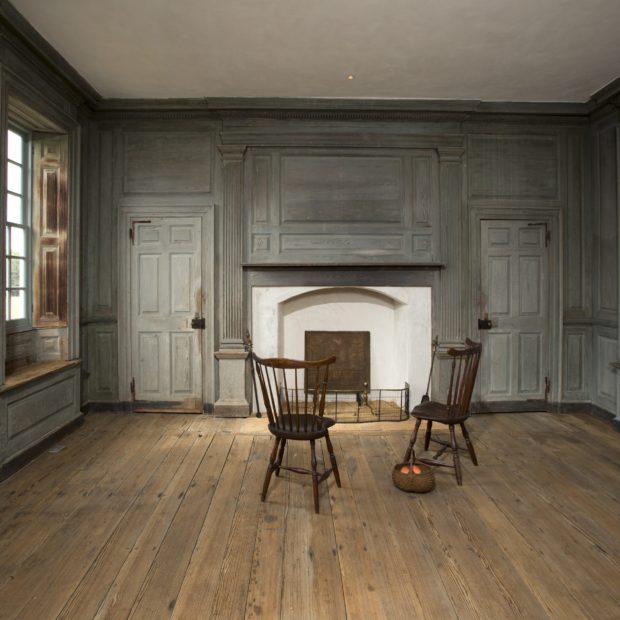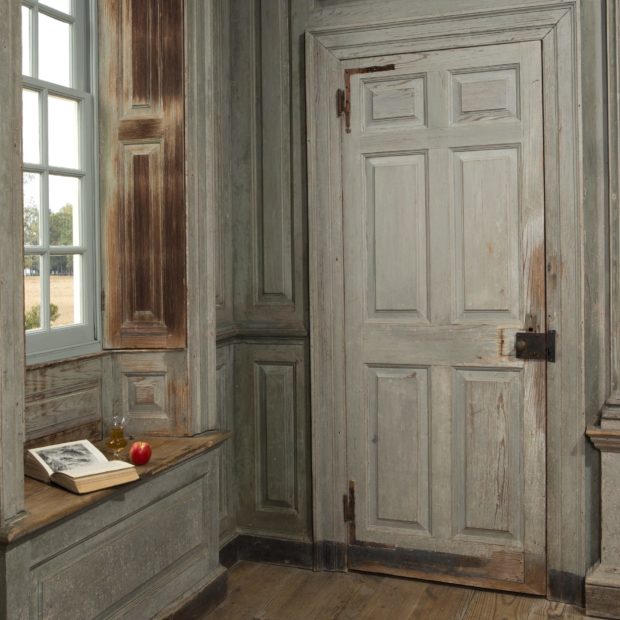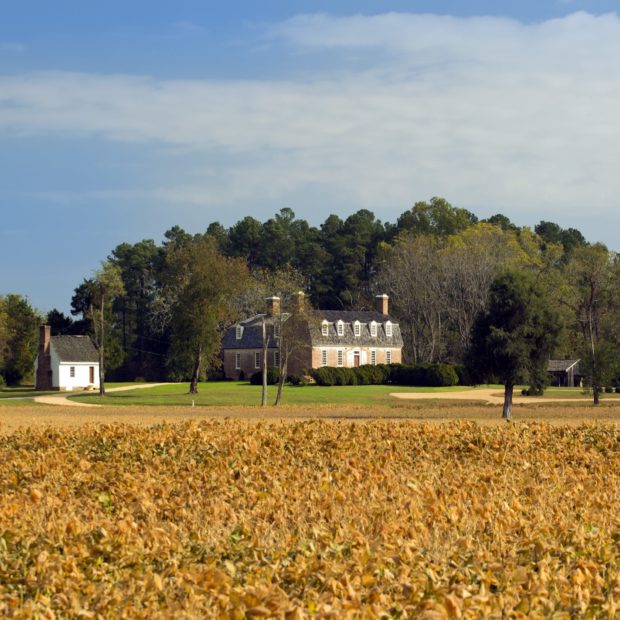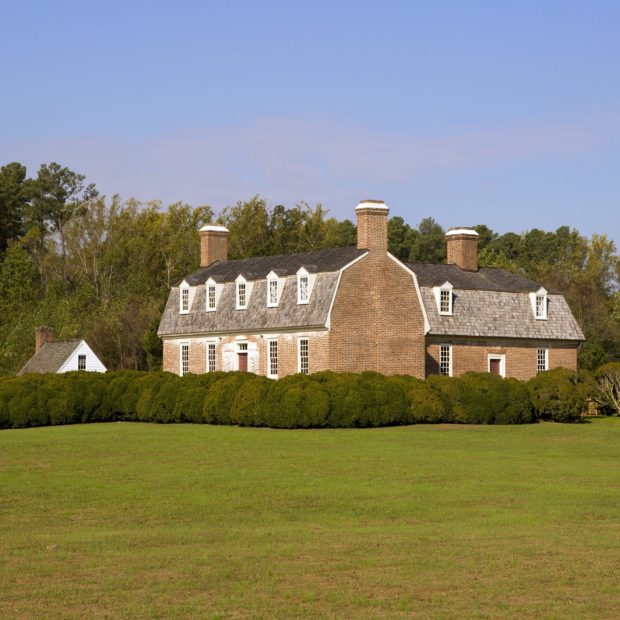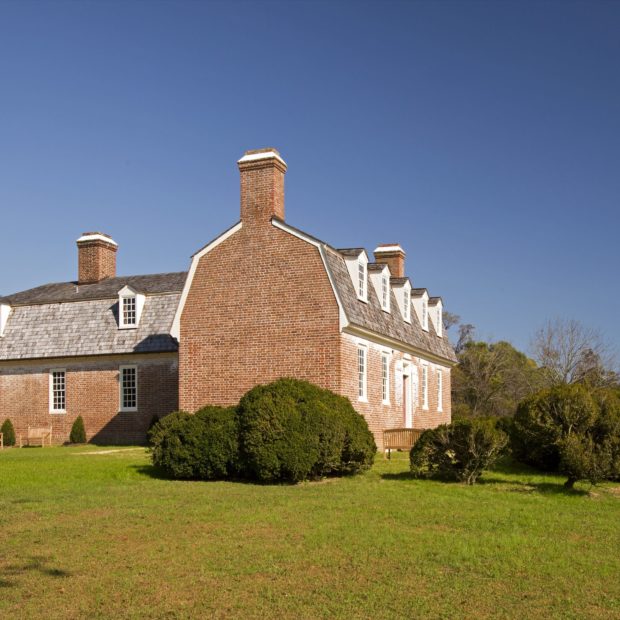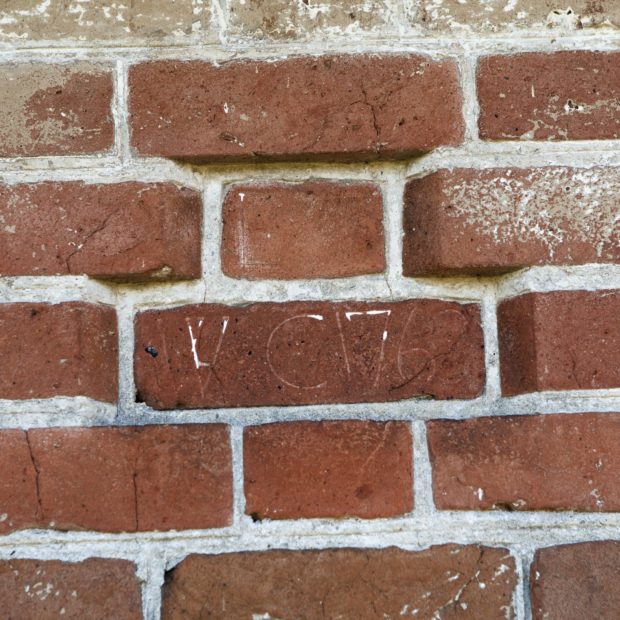Historic Full House Restoration in Virginia
Project Overview
When a Washington DC client approached us in May 2011 and asked us if we would be willing to help with the design and restoration of Wilton – a 1763 Tidewater Virginia plantation house – we were intrigued but also hesitant. This would truly be a unique opportunity to restore a one-of-a-kind property; Wilton was the rare prominent 18th century home that had never undergone a major renovation, and it had been featured as such in numerous magazines and publications. On the other hand, the project would be challenging and present many firsts for our company. Wilton’s previous owner was Preservation Virginia, which had imposed strict historical easements on the property. That meant we would be under close scrutiny on any interior or exterior modifications, and while we are familiar with DC historic preservation requirements, this would be a whole new ballgame. Since the house had never been modernized, we would need to bring in new power, air conditioning, heating, and water service as well as connect to an existing septic system and dig new wells. Finally, there was the distance. Located in Middlesex County, Virginia, a 150-mile drive from Washington, we would have to navigate the commute both in the design and construction phases. After talking the project through, we decided to take it on.
Design and Layout
The challenge at Wilton was how to install modern amenities while preserving the museum-like qualities of a house built in the mid-18th century which retained its original floor plan and external foot print and most of its original building materials. In addition to the extensive restoration, conservation and new-systems work, our charge was to add a kitchen and three and a half baths where none previously existed. The owner was insistent – as were the historical easements — that as many of the original walls and doorways remain intact. The kitchen went in one wing of the first floor, and was designed to read as furniture rather than built-in cabinetry. The appliances were paneled in a style to reflect existing interior doors and woodwork. One wing of the second floor had two connected rooms, and we chose the end room for the master bath. Keeping the original layout intact, we tucked a wall-mounted toilet into an original window seat space (one of 23 in the house) and used solid marble for the shower pan and walls. (The result is, we think, a modern bathroom that both complements and is complemented by its 18th century surroundings.) The other two bathrooms fit into a large hallway in the front wing of the house, leaving all adjacent walls and doors intact. The heart pine plank flooring in all three bathrooms was preserved, and disturbed as little as possible. Closets were added wherever possible with a gentle touch. After several months of sketching, drawing, and redrawing, we were ready to pick finishes.
Style and Finishes
The overall goal was to preserve as much of the original floor plan and materials as possible. Paint historians identified which colors were original, and architectural historians weighed in as well. Early paint surfaces were retained, cleaned and conserved wherever possible, and new woodwork was faux-painted to match the old. We were also careful with lighting, relying mostly on floor lamps, wall sconces and a few judiciously placed chandeliers, but adding small recessed spotlights that were integrated flush with the plaster. HVAC registers and bath fans were integrated in the same way, and are barely visible. Plaster walls and ceilings were either restored or re-hung with fresh plaster using historical materials and methods. The paneling in the principal reception room (which, legend has it, John D. Rockefeller wanted for the re-built Governor’s Palace in Williamsburg) was carefully re-hung and repaired, and millwork and doors were either reused or replicated. The floors were scrubbed, but left unfinished. Plumbing fixtures and appliances were more of a challenge, but our goal was to be as unobtrusive as possible while maintaining the upscale feel this house deserved (and our client demanded).
Construction and Final Product
Wilton was intact from a historic perspective. The house, however, was not. Chimneys, fireplaces, and exterior walls were in need of substantial work, and were carefully repaired and re-pointed by a local mason. The roof was leaking, and was replaced with scalloped, “fish-scale” cedar shingles (modeled after an early, 18th century shingle found in one of the closets in the house), and although the new cedar stood out at the beginning, it quickly faded to a lovely grey patina. Many of the original joists were repaired, and in some places leveled. In the two rooms where the original flooring had been replaced, old floorboards were located through a local antique dealer, scraped clean of old debris and varnishes, cleared of early nails, then re-planed and installed. They now blend in seamlessly with the original floor boards in the rest of the house. An early challenge was assembling a team of local trade partners, so during the design phase we held several meetings on site with HVAC, plumbing, and electrical contractors, as well as septic experts, well diggers, and local code officials.
Once a team was put together, we were ready to focus on means and methods. Insulation was a challenge, as the house was designed to breath. We settled for a light application of batt insulation in the attic, but made up for the lack of energy efficiency by installing two geothermal heating and cooling systems with air handlers located in the cellar and attic. Using geothermal systems also obviated the need for unsightly external heat pumps. The water heater connected to the geothermal system, and plumbing was carefully threaded through the existing walls (which partially defined our bathroom layouts). A sump pump removed water from the cellar, which was then paved with loose laid brick. For moisture control, the crawl space was lightly conditioned. Finishes, fixtures, and cabinetry were stored in an offsite warehouse, and trucked in when needed. When the time came, our carpenters spent several weeks finishing the installation – staying in a local Bed and Breakfast because of the distance.
What the Customer Said
“Before Wilton, Four Brothers had done three distinct projects for my home in Washington DC, relatively small but increasingly sophisticated. Obviously, I liked their style. They were straightforward, courteous, true-to-their-word, very good at what they did, took a lot of pride in doing it, and, not a matter of small consequence, were a pleasure to work with. So I thought of them, and consulted with them, before I undertook this historical renovation project. While Wilton was challenging in the extreme and historical preservation work was a little bit out of their typical work area, knowing their capabilities, their workmanship, and their values, I was confident that Four Brothers was the partner I needed to make this work. In the end, my confidence was fully warranted. They had the full skill set — design, planning, sourcing materials, dealing with the highly technical aspects of modern systems, craftsmanship — and brought all those skills to bear in consistently getting things done right. A project like Wilton takes a long time; there is no avoiding that. It also presents a lot of surprises — and curve balls and knucklers. To get it right, you need to be flexible, creative. These guys came up with a lot of good ideas on their own, and if they did not always initially get what I was looking for (hard to do if, as was often the case, I didn’t quite know what I was looking for), they always went back to the drawing boards – willingly and with good cheer – to come up with a solution. I could go on, but maybe you should just look at the pictures, which provide ample and better testimony to their good work.”
